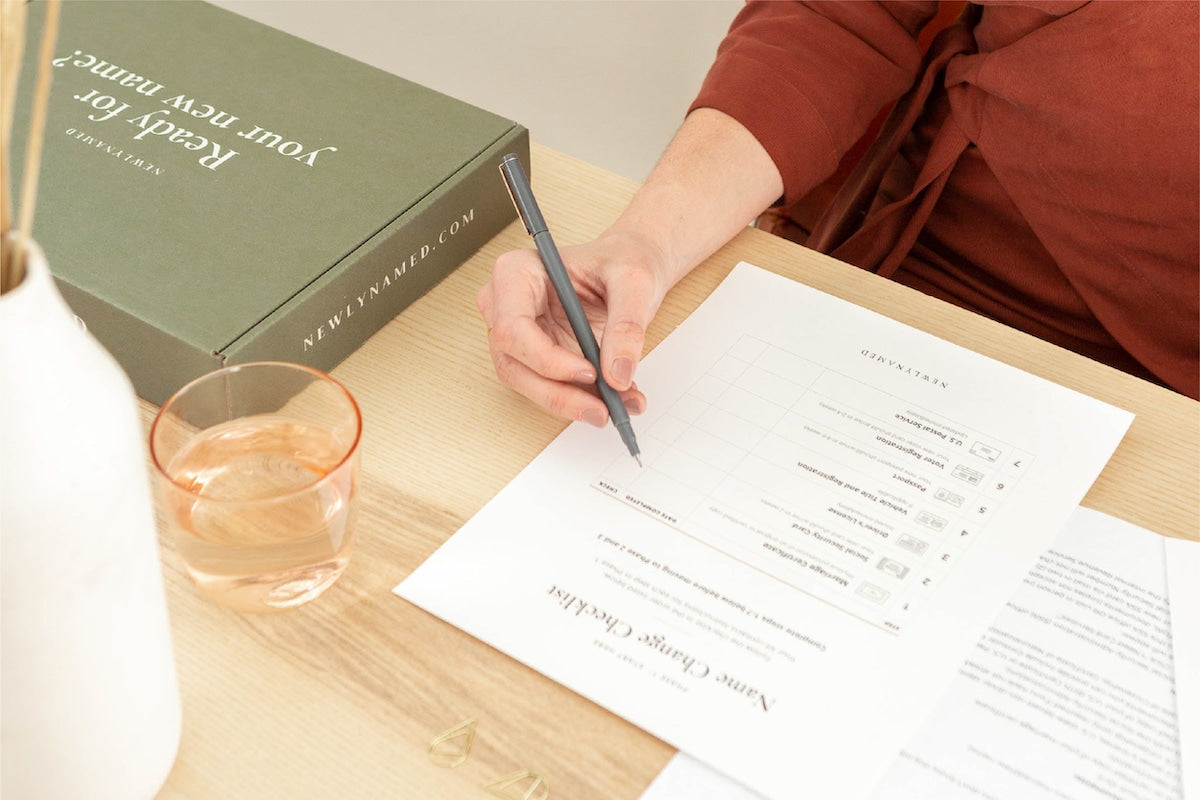Key Takeaways:
- Benefits Of Opening A Joint Bank Account: Opening a joint bank account offers couples simplified financial management, enhanced transparency, and a unified approach to achieving shared financial goals.
- Downsides Of Joint Accounts: Potential downsides of joint accounts include shared liability, possible loss of financial independence, and complex financial disentanglements during separations.
- Types Of Joint Accounts: Various types of joint accounts cater to different needs, such as joint-tenancy accounts, tenants in common, and community property accounts, offering flexibility in choosing the right fit for a couple's specific requirements.
Whether you're newly married, planning for the future, or just looking to simplify shared expenses, opening a joint bank account is a practical step in merging your financial lives. From splitting bills and saving for milestones to managing daily spending together, joint accounts can bring clarity and collaboration to your money management.
At NewlyNamed, we know that with big life changes often come new financial responsibilities. We’re here to help you feel confident as you navigate them. In this guide, we’ll walk you through how to create a joint bank account, what to expect during the process, and how to decide if it’s the right fit for your relationship.
What Is A Joint Bank Account?
A joint bank account is a single account shared by two or more individuals (usually married couples) who both have equal access to the funds. This means either person can deposit, withdraw, or manage the money within the account, regardless of who contributed it. What makes joint bank accounts especially useful is that they consolidate your day-to-day finances into one shared space. From direct deposit paychecks to automatic bill payments, everything can flow through a central hub you both manage. That transparency encourages shared budgeting and communication, key ingredients in any strong financial partnership.
Understanding Ownership Structures in Joint Bank Accounts
When opening a joint bank account, most banks don’t ask you to choose between different legal ownership types like “Joint Tenancy” or “Tenants in Common.” Instead, they typically offer a standard joint account setup where both parties have equal access and responsibility. However, it’s still helpful to understand how ownership might be treated behind the scenes—especially in estate planning or legal matters.
Here are the most common ownership structures you might hear about, even if banks don’t label them explicitly:
Joint Tenancy (With Rights of Survivorship)
This is the default arrangement for most joint bank accounts. Both account holders share equal ownership, and if one person passes away, the surviving account holder automatically assumes full ownership. While banks may not use this exact term, this is generally how joint accounts are treated.
Tenants in Common
Less common in personal banking, this legal structure allows each account holder to own a defined share of the account. Upon one person’s death, their share becomes part of their estate rather than transferring to the other account holder. Most banks don’t offer this as a selectable option for standard joint checking or savings accounts, but it may arise in legal or business account contexts.
Community Property Accounts
In community property states (such as California, Texas, and Arizona), the law may treat money in a joint account as equally owned by both spouses, regardless of who deposited it. This isn’t something you typically elect at the bank—it’s more about how state law governs ownership in the event of divorce or death.
Choosing the right type of joint account depends on your financial goals, how you want to manage ownership, and whether you’re married or in a long-term partnership. It’s worth having a conversation (and maybe even consulting a financial advisor) to ensure you’re selecting the option that aligns with your life stage and legal needs.
Benefits Of Joint Bank Accounts For Couples
For many couples, opening a joint bank account is a significant step in building a shared financial future. Whether you just tied the knot or simply want to start combining your resources, a joint account can bring clarity to how you spend, save, and plan for the future. Here are a few compelling reasons why couples choose to open one:
Simplified Money Management
A joint bank account makes everyday expenses easier to track. From rent and groceries to shared subscriptions or utilities, managing costs from a single account helps eliminate confusion and cuts down on back-and-forth reimbursements. It also gives you both visibility into where your money is going, making budgeting more collaborative and efficient.
Building Trust And Teamwork
Combining finances takes trust, and a joint account can help reinforce that trust over time. You’re not just pooling money; you’re being completely transparent about your spending habits, savings, and monthly bills. If you're navigating huge life shifts like getting married or updating your surname with a NewlyNamed Box, it's the perfect time to talk through how to combine finances after marriage in a way that works for both of you. Joint accounts can help you find your financial rhythm as a couple: one rooted in honesty and mutual respect.
Streamlined Bill Payments
One of the biggest perks of a joint account? Paying bills just got easier. With both partners contributing to the same account, you can set up automatic payments and track upcoming due dates in one place — no more keeping tabs on who paid what or Venmoing money back and forth each month.
Emergency Fund Planning
Planning for the unexpected is part of any strong financial partnership. A joint bank account makes it easier to combine your emergency savings, giving you peace of mind that you have a readily accessible pool of funds to tap into when life throws a curveball. Even if you’re hit with an unexpected medical bill, job loss, or home repair, this financial safety net will help carry you through.
So how much should you save? A good rule of thumb is to keep three to six months’ worth of essential living expenses in your emergency fund. That includes rent or mortgage, utilities, groceries, insurance, and minimum debt payments. With both partners contributing regularly, you can grow that cushion faster and keep track of how and when you use it — all in one place.
Reduced Account Fees
Banks often waive fees if you maintain a minimum balance, and combining funds can help you hit that threshold more easily. From reduced service charges to perks like free overdraft protection or higher interest rates on savings, joint accounts can unlock extra benefits when you manage them strategically.
When used correctly, opening a joint bank account can streamline the process of managing your finances as a couple. When approached with clear communication and mutual trust, it becomes more than just a convenience; it becomes a tool for building a strong financial future together.
Potential Drawbacks Of Joint Bank Accounts
Choosing to open a joint bank account is a meaningful milestone for any couple, so it's important to weigh the pros and cons. While shared accounts offer convenience and streamlined financial management, they also come with their fair share of challenges.
Loss Of Financial Autonomy
Sharing an account means sharing control. For some, this can feel like a loss of financial independence, especially if you're used to managing your money solo. With both partners able to view and access funds, everyday purchases may require more discussion than you're used to.
Potential For Disagreements
Money is one of the most common sources of conflict in relationships. Differences in spending habits, saving priorities, or budgeting styles can lead to friction. That’s why we highly recommend that you set clear financial expectations as early as possible.
Shared Financial Liability
Keep in mind that both partners are equally responsible for the account. If one person overspends or accrues overdraft fees, the other is just as accountable. Even if you weren’t the one who made the transaction, it could impact both of you financially.
Impact On Credit Score (Indirect)
While most checking and savings accounts don’t directly affect your credit score, issues like unpaid overdraft balances sent to collections can appear on your credit report. That’s why maintaining communication and regularly monitoring the account is essential.
Legal Implications
In the event of a separation or divorce, joint funds can become a legal gray area. One partner can typically withdraw the entire balance without consent, and untangling those finances may require legal support.
Despite these drawbacks, joint bank accounts can work beautifully for couples who prioritize clarity, communication, and healthy boundaries. Understanding the risks ahead of time helps you avoid common pitfalls.
How To Combine Finances: Adding an Authorized User vs. Opening a Joint Bank Account
When looking to combine finances with a partner, many people assume they need to open a brand new joint bank account. But there’s often a simpler alternative: adding an authorized user to an existing account. This approach can achieve many of the same goals with less effort and paperwork.
Option 1: Add an Authorized User to an Existing Account
Many banks allow you to add your spouse or partner as an authorized user to an existing account. This is often the fastest and easiest way to share access. The primary account holder can usually log into their online banking portal and add the authorized user by providing some basic personal details, such as:
- Full legal name
- Date of birth
- Social Security number
- Current address
If the option isn’t available online, a quick call to customer service can get the process started. While authorized users can make purchases and access account features, keep in mind that the primary account holder remains legally responsible for the account.
Option 2: Open a New Joint Bank Account
If you prefer to have both partners listed as co-owners of the account—with equal responsibility and access—opening a new joint account is the way to go. This process is slightly more involved and may require a visit to the branch, though many banks also allow joint accounts to be opened online.
Here’s what you’ll typically need:
- Identification: Valid government-issued photo ID (e.g., driver’s license, passport, or state ID) for both partners.
- Proof of Address: Recent utility bill, lease agreement, or similar document. Some banks require this from each person.
- Social Security Number (SSN): Needed to verify identity and comply with federal regulations.
- Joint Application Form: Both parties usually need to sign a form authorizing shared access and agreeing to account terms.
- Existing Bank Information: If you plan to fund the new joint account via transfer, bring your current account and routing numbers.
Calling your bank ahead of time can help confirm the specific requirements and speed up the process.
If you’re trying to figure out how to change your name after marriage, it’s essential to make sure your identification reflects your new legal name before opening a joint bank account. That’s where NewlyNamed can help. Our Print at Home Name Change Kit and NewlyNamed Box include everything you need — pre-filled forms, personalized instructions, and a step-by-step checklist — to update your name with banks, credit card companies, government agencies, and more. It’s a streamlined solution that removes the stress from an already busy chapter of life.
Step-By-Step Guide To Opening A Joint Bank Account
Opening a joint bank account isn’t just about convenience; it’s about laying a solid foundation for your financial future together. Whether you're newly married or simply ready to take the next step, this guide will walk you through how to open a joint account that works for both of you:
- Discuss Your Financial Goals: Before anything else, sit down and talk about your financial dreams and concerns. Discuss who will manage what beforehand (e.g., bill payments, monitoring spending) to keep things running smoothly. Being on the same page with your partner ensures that the account serves both your needs.
- Choose The Right Bank: Not all banks offer the same perks. Look for one that supports joint accounts and aligns with your needs. For example, you’re going to want to look for low fees, user-friendly mobile apps, ATM access, and interest-earning options. Some banks even offer relationship benefits for couples with multiple accounts! Taking advantage of these benefits can save you a lot of time and money in the long run.
- Gather Necessary Documents: Most banks require government-issued photo ID (like a driver’s license or passport), your Social Security number, and possibly proof of address. If you've recently changed your name due to marriage or divorce, bring your legal name change documents (such as a marriage certificate or divorce decree) to avoid delays.
- Complete The Application Together: Applications can usually be completed online or in person. Both partners must be present to provide their information and sign the required forms. Accuracy matters here. Make sure names, addresses, and identification details match your legal records.
- Customize Account Features: Talk to your banking advisor or representative about available add-ons and customization options. Whether it's overdraft protection, direct deposit, linked savings accounts, or real-time alerts, make sure your joint account is set up to support your financial habits and preferences.
- Deposit Funds: Most banks require an initial deposit to open the account. Decide how much you'd like to contribute and consider linking your individual accounts to make future transfers quick and seamless.
- Set Up Online Banking And Alerts: Once your account is active, enroll in online and mobile banking for convenient access. Set up alerts for low balances, large transactions, or deposits so you’re both in the loop and can stay on top of your finances.
Opening a joint bank account is a straightforward process when you're prepared. From aligning on your financial goals to gathering documents and customizing account features, each step helps lay the groundwork for shared financial success. Whether you're merging finances for the first time or updating your details after a life change, a little planning goes a long way in making your transition into joint banking feel smooth and intentional.
Final Thoughts
Opening a joint bank account means merging your savings, spending habits, and financial goals into one shared plan. Whether you’re a few years in or freshly married, figuring out your finances is an ever-evolving process. Through it all, the key is clarity, communication, and a whole lot of teamwork. And if a name change is part of the process, NewlyNamed makes it way easier to update your info without the paperwork chaos, so you can focus on building your next chapter together with confidence.
Read also:
- How To Change Your Name After Marriage [2025 Guide + Printable Checklist]
- Updating Your Credit Card Name: What You Need To Know
- Preparing The Paperwork For Your Name Change
Frequently Asked Questions Opening A Joint Bank Account
How do we set up permissions and access for each person?
When opening a joint bank account, both individuals typically receive equal access by default. That means either person can deposit, withdraw, and manage the account. While most joint accounts don’t allow you to limit permissions separately, it's important to have a conversation upfront about how each partner will use the account and handle shared responsibilities to avoid confusion or miscommunication later.
What is the difference between 'And' & 'Or' accounts?
The terms “and” vs. “or” determine how transactions are authorized. An “and” account requires signatures or approval from both account holders for any withdrawals or changes, offering more oversight but less convenience. An “or” account allows either person to manage funds independently, which is more flexible day-to-day but comes with fewer checks and balances. Most joint accounts default to “or” unless specified otherwise.
Can unmarried couples open a joint bank account?
Yes, most banks allow unmarried couples to open joint bank accounts. The process is the same as it is for married couples: both individuals provide identification and sign the application. That said, because both parties have equal rights to the funds, it’s especially important to discuss expectations and boundaries beforehand and to be on the same page about how the account will be used.
How do banks handle disputes between joint account holders?
In general, banks do not get involved in disputes between joint account holders. Both individuals have equal access to the funds and can withdraw money at any time. If a conflict arises, it’s up to the account holders to resolve it. That’s why it’s smart to have clear agreements in place from the start. In more complex situations, legal advice may be helpful.
Should we merge all our finances into a joint bank account?
It really depends on what feels right for your relationship. Some couples prefer to combine all their money for simplicity and transparency, while others maintain separate accounts to preserve financial independence. A popular middle ground is the hybrid approach, where you both keep your individual accounts while contributing to a joint one for shared expenses. You can always start with a hybrid model and adjust over time based on what works best for both of you.
Can we open a joint bank account online?
Yes, many banks allow you to open a joint account online. In many cases, the primary applicant can initiate the process and select the option to add a joint account holder during the application. The secondary account holder may not need to be present at the time of application but will typically need to provide their personal information and verify their identity later through a secure process. The setup is generally quick and convenient—just be sure both parties agree on the account structure and responsibilities.








